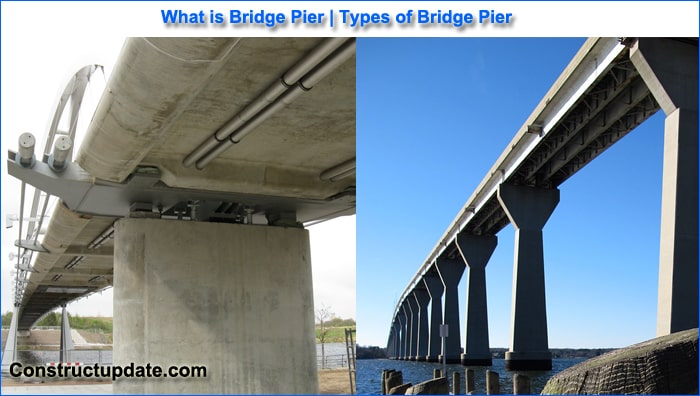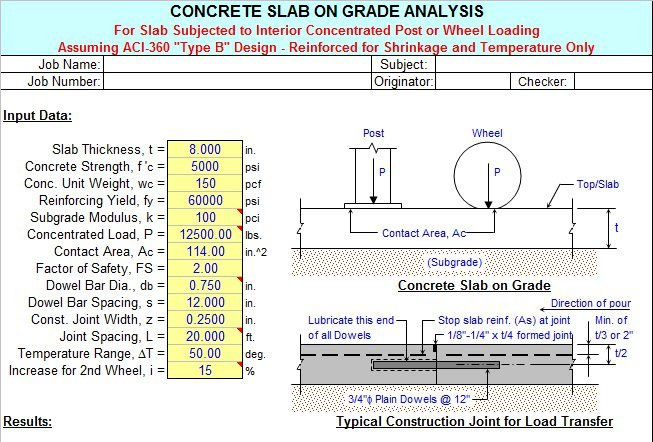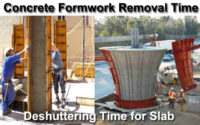What is Bridge Pier | Bridge Pier Types | Purpose of Bridge Pier
What is a Pier on a Bridge?
Bridge Piers offer vertical support for spans at intermediate places and serve two purposes: transmitting vertical superstructure loads to the foundations and resisting horizontal forces acting on the bridge.
Although piers are meant to withstand vertical loads, they are increasingly being constructed to withstand severe lateral loads generated by seismic disturbances.
Designers are paying increasing attention to this ductility aspect of the design, even in low seismic zones.
Bridge The piers support the bridge’s spans and transfer loads from the superstructure to the foundation. Piers must be able to withstand both vertical and horizontal loads. Its primary role is to transfer load from the bridge superstructure foundation below it to the foundation underneath it. In the transverse and longitudinal directions, they are subjected to massive axial loads, bi-axial moments, and shear forces. Piers, on the other hand, are typically compression parts of a bridge. Piers are also known as Bents.

The design limit states for bridge piers are as follows:
Ultimate limit state – Ultimate flexure capacity, shear; Service limit state – Crack breadth, concrete and steel stresses; Earthquake, vessel and vehicle impact, and tiredness are examples of extreme events.
Types of Bridge Piers
Piers are divided into two categories based on their structure: solid piers and open piers. These types are further divided into the following categories:
1. Solid Piers
Solid piers are made of bricks, stone Masonry, mass concrete, or reinforced concrete and have a solid and impermeable construction. Solid masonry piers and solid reinforced concrete piers are two types of solid piers.
1.1 Solid Masonry Piers
Brick, stone, and concrete make up the structure. The exterior half of a solid masonry pier is made of stone masonry for cost savings, while the inside part is filled with mass concrete.
1.2 Solid Reinforced Concrete Piers
Solid reinforced concrete piers are typically rectangular in cross-section and made of reinforced concrete. It is utilised when the pier height is greater than the solid masonry piers, which would not be strong enough to support the weight and would be uneconomical.
2. Open Piers
Open piers allow water to enter through the construction and are divided into three types:
2.1 Cylindrical Piers
Cast iron or mild steel cylinders are filled with concrete to form a cylindrical pier. This pier is appropriate for bridges of moderate height. Steel bracing, both horizontal and diagonal, may be utilised to improve stability in some instances.
2.2 Column Piers or Column Bent
This pers is appropriate for bridges of great height. The frame is made up of a cap beam and supporting columns. Column bending piers can be used to support a steel girder superstructure or as an integral pier when using the cast-in-place construction method.
The cross-section of the columns might be round or rectangular. They are the most common types of piers in today’s roadway system.
2.3 Pile Pier or Pile Bents
Piers with two or more columns that support a cap are known as multicolumn, pile bent, or frame bent. If the gap between columns is large, the isolating footing is employed; otherwise, integrated footing would be more appropriate. When water is allowed to flow between the columns, there is a debris accumulation issue.
2.4 Trestle Pier or Trestle Bent
2.5 Masonry Piers
2.6 Mass Concrete Piers
2.7 Reinforced and Prestressed Concrete Piers
2.8 Fixed Piers
2.9 Fixed Piers
2.10 Special Shaped Bent
2.11 V-Shaped Concrete Pier
Purpose of Bridge Piers
- It should safely transfer loads from the superstructure to the foundation.
- It should be able to endure any force.
- The pier material should be readily available.
- It should be appealing to the eye.
- Its design should be straightforward.
- Weathering, collisions, and corrosion should not be a problem for the piers.
- Construction should be inexpensive.
- It should be inexpensive to fix and maintain.
- It must be stable against lateral and longitudinal force actions such as earthquakes, wind, ice, currents, and impacts.





